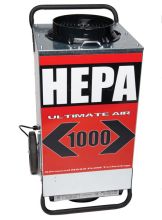How to Clean Mold Contaminated Contents
Mold spores are always present around us, but when given the right conditions (temperature, moisture, and a food source), mold can attach and grow to various surfaces and present a health hazard.
Professional restoration technicians and contractors are often tasked to remove mold from more than just walls, floors, and ceilings. In some situations where mold has grown out of control, there may be items and building contents that also require treatment.
Each item that is afflicted with mold growth will require a specific and unique set of procedures for successful remediation. In some cases, due to the nature of the item with mold damage, remediation may not be possible, and the item will have to be discarded.
Basic Procedures for all Types of Mold-Contaminated Contents:
The first step of the cleaning process is to conduct a survey of the contaminated areas. While wearing appropriate personal protective equipment, the inspector should conduct a thorough visual or video inspection to determine the quantity and type of items that will have to be cleaned. This should include identifying surfaces that are porous (those that have tiny gaps or holes completely through them, such as cloth or paper), semi-porous (those that have some holes but are not completely permeable), and non-porous (those that have no gaps in the surface). (For our purposes, hard objects that allow air to circulate through them, such as computers, or objects with many contours, such as carvings, are treated as semi-porous items.)
Since it is often easiest to dispose of porous and semi-porous items, the owner should be consulted to identify items of high intrinsic value, such as art, historical documents, or photographs that should be cleaned rather than discarded. This type of cost/benefit analysis should be conducted with the owner after the survey has been conducted.
All porous or semi-porous items with visible mold growth should be disposed of unless their value justifies specialized cleaning techniques, such as freeze-drying, use of an ozone chamber, or solvent washes. For paper items, it may be more cost effective to make copies of the contaminated items and discard the originals.
Training Opportunity: Technicians who handle water and fire restoration jobs would benefit greatly from attending Microbial Remediation Technician and Microbial Remediation Supervisor. These courses offer thorough instruction on safety, standards, and techniques necessary to succeed in mold remediation. Beginning with a biological overview of mold contamination to the most effective remediation equipment and supplies, these hands-on courses provide a complete and thorough education.
Basic Procedures*
Cleaning Appliances Contaminated with Mold
- Vacuum all surfaces using a HEPA vacuum.
- Blow compressed air through fan exhaust.
- Thoroughly clean the appliance using a mild detergent.
- Wipe all surfaces with a disinfectant solution.
- Vacuum all surfaces again using a HEPA vacuum.
- Have an independent hygienist verify your cleaning.
Cleaning Bedding Contaminated with Mold
- HEPA vacuum all bedding, mattresses, box springs, pillows, etc.
- Sheets, blankets, duvets, etc should be laundered as per label instructions.
- Pillows and stuffed animals should be laundered if possible.
- Clean mattresses and box springs via hot water extraction and speed dry using air movers.
- Apply Microban X-590 to mattresses and box springs and allow to air dry
- HEPA vacuum mattresses, box springs, and all non-launderable items.
Cleaning Clothing and Fabric Contaminated with Mold
- All machine washable clothing should be vacuumed with a HEPA vacuum, and then laundered.
- All dry-clean-only clothing should be either hand washed or replaced. Dry cleaning is not an effective remedy to remove mold.
- Area rugs should be HEPA vacuumed and cleaned either via hot water extraction or immersion cleaning.
Cleaning Electronics Contaminated with Mold
- HEPA vacuum all surfaces.
- Blow compressed air through fan exhaust and throughout the unit.
- Clean with Unsmoke Degrease-All E.
- Wipe with a disinfectant.
- HEPA vacuum all surfaces.
*Source: Wondermakers Environmental

We pay the shipping charge, including hazardous material fees, on this item. There's no catch. No "buy this to get that" requirement.
Note: If your order contains items that are not eligible for free shipping, your order total will include our competitive shipping rates for those non-eligible items only. This shipping policy only applies to orders shipped within the Contiguous U.S.


